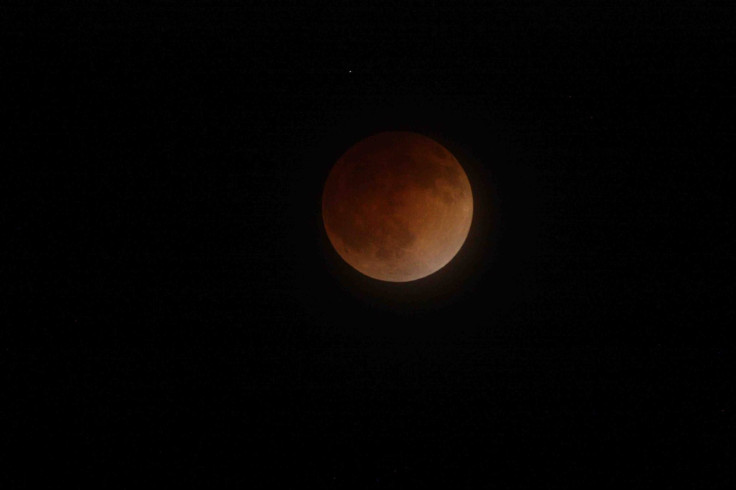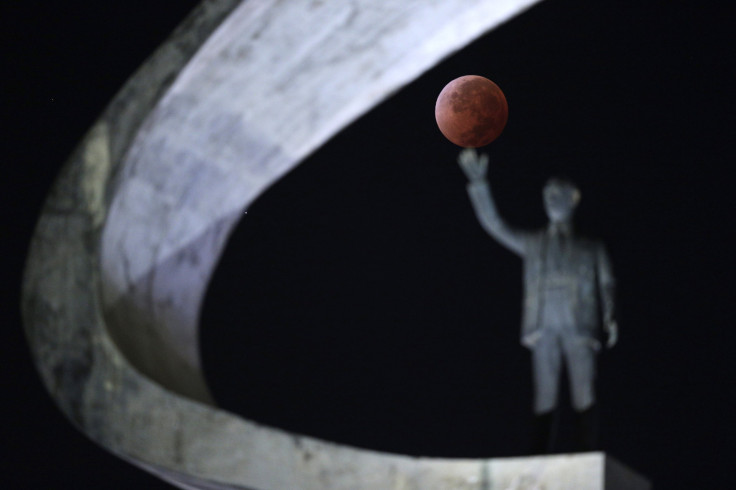Blood Moon Rises: Total Lunar Eclipse Had North America Staying Up Late [PHOTOS/VIDEOS]
Tuesday’s total lunar eclipse had stargazers staying up late to watch the blood moon. While parts of the U.S. East Coast, including New York, were unable to view the eclipse, plenty of amateur astronomers snapped photos and observed the event. NASA, Slooh and observatories around the world also observed the eclipse.

The total lunar eclipse began around 2 a.m. EDT on Tuesday. During that time, the moon darkened as it entered Earth’s partial shadow. Observers could watch a sped up version of the phases of the moon ahead of the peak of the eclipse. The total lunar eclipse peak occurred around 3:45 a.m. EDT and when the moon entered Earth’s shadow, or umbra, the moon turned red, hence the name blood moon.
Noah Petro, Lunar Reconnaissance Orbiter deputy project scientist at NASA's Goddard Space Flight Center, explains why the moon turns red. "It's a projection of all the Earth's sunsets and sunrises onto the moon."
On Twitter, #bloodmoon was a trending topic and had more than 132,000 mentions.

Tuesday’s blood moon marks the beginning of a lunar tetrad, a set of four total lunar eclipses that occur in succession every six months. The next total lunar eclipse happens on Oct. 8.
#bloodmoon as seen from Fort Myers, FL. #NBCEclipse #totallunareclipse #LunarEclipse #LunarEclipseFlorida pic.twitter.com/WV5Tv5qjv0
— John Magero (@jpmagero) April 15, 2014The tetrad is not an uncommon phenomenon, although there could be century long periods that do not experience a tetrad. Fred Espenak, NASA’s eclipse expert, notes there have been nine tetrads in the 21st century. Tuesday’s total lunar eclipse gained even more attention after the “blood moon prophecy” touted by John Hagee, a widely followed Texas televangelist, started circulating around the Internet. Hagee cites a passage from Joel 2:31 in the King James Bible that states, “The sun shall be turned into darkness, and the moon into blood, before the great and the terrible day of the LORD comes.”

Whether or not the blood moon has any special historical significance remains to be seen, but the eclipse was a unique opportunity for North America. The total lunar eclipse was visible across North America, pending weather and cloud cover, and residents will have to wait five years, until 2019, for such an opportunity.
With everyone out observing the eclipse, NASA was checking in on the Lunar Reconnaisance Orbiter (LRO). The LRO uses solar panels to charge its batteries and will pass through Earth's shadow twice before it has a chance to recharge but the space agency believes the orbiter will return to normal operations.
Videos of the total lunar eclipse, courtesy of Griffith Observatory, Slooh and the Virtual Telescope Project can be viewed below.
© Copyright IBTimes 2025. All rights reserved.






















